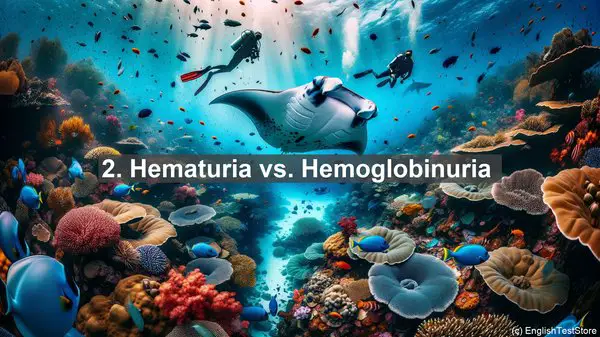Introduction
Welcome to today’s lesson. In the field of nephrology, there are several words that often cause confusion. Understanding these terms is crucial for accurate communication and diagnosis. So, let’s dive into the top 10 commonly confused words in nephrology.

1. Nephritis vs. Nephrosis
Nephritis and nephrosis both refer to kidney diseases, but they have distinct characteristics. Nephritis involves inflammation of the kidney, often due to an infection or an autoimmune condition. On the other hand, nephrosis is a non-inflammatory condition characterized by abnormal kidney function, often associated with proteinuria or edema.
2. Hematuria vs. Hemoglobinuria
Hematuria and hemoglobinuria both involve the presence of blood in the urine, but they originate from different sources. Hematuria indicates the presence of intact red blood cells in the urine, which can be a sign of various kidney or urinary tract issues. Hemoglobinuria, on the other hand, refers to the presence of free hemoglobin in the urine, often seen in conditions like hemolytic anemia.
3. Azotemia vs. Uremia
Azotemia and uremia are related to the accumulation of waste products in the blood due to kidney dysfunction. Azotemia refers to an increase in blood urea nitrogen (BUN) and creatinine levels, indicating impaired kidney function. Uremia, on the other hand, is a more severe condition where these waste products accumulate in the body, leading to symptoms like fatigue, nausea, and altered mental status.
4. Oliguria vs. Anuria
Oliguria and anuria are terms used to describe urine output. Oliguria refers to decreased urine production, often defined as less than 400 mL per day. Anuria, on the other hand, is the absence of urine production, often defined as less than 100 mL per day. Both conditions can indicate underlying kidney issues or other systemic problems.
5. Glomerulonephritis vs. Tubulointerstitial Nephritis
Glomerulonephritis and tubulointerstitial nephritis are types of kidney inflammation, but they affect different parts of the kidney. Glomerulonephritis primarily involves the glomeruli, the filtering units of the kidney. It often presents with features like hematuria and proteinuria. Tubulointerstitial nephritis, on the other hand, affects the tubules and interstitium, often caused by medications, infections, or autoimmune conditions.
6. Nephrolithiasis vs. Hydronephrosis
Nephrolithiasis and hydronephrosis are both conditions that can cause kidney pain, but they have different underlying causes. Nephrolithiasis, commonly known as kidney stones, occurs when there is a buildup of crystals in the urinary system. Hydronephrosis, on the other hand, is the swelling of the kidney due to a blockage in the urinary tract, often caused by conditions like kidney stones or tumors.
7. Dialysis vs. Hemodialysis
Dialysis is a general term for the process of removing waste products and excess fluid from the blood when the kidneys cannot perform this function adequately. Hemodialysis is a specific type of dialysis that involves using a machine to filter the blood. Other types of dialysis include peritoneal dialysis, which uses the peritoneal membrane in the abdomen as a filter.
8. Proteinuria vs. Hematuria
Proteinuria and hematuria are both abnormal findings in the urine, but they indicate different issues. Proteinuria refers to the presence of excess protein in the urine, often a sign of kidney damage or dysfunction. Hematuria, as mentioned earlier, indicates the presence of blood in the urine, which can be a sign of various kidney or urinary tract problems.
9. Hypertension vs. Hypotension
Hypertension and hypotension are terms used to describe blood pressure levels. Hypertension refers to high blood pressure, often defined as a reading above 130/80 mmHg. It is a common condition in patients with kidney disease. Hypotension, on the other hand, is low blood pressure, which can have various causes and can lead to symptoms like dizziness and fainting.

10. ESRD vs. CKD
ESRD and CKD are stages of kidney disease. CKD, or chronic kidney disease, is a progressive condition where the kidneys gradually lose their function over time. ESRD, or end-stage renal disease, is the final stage of CKD, where the kidneys have lost almost all their function. At this stage, dialysis or kidney transplantation becomes necessary for survival.
